Integrated Cladding Support Systems for Better Thermal Performance
Energy-efficient cladding systems are one of the top ways to improve thermal performance
![]() Continuing Education
Continuing Education
Use the following learning objectives to focus your study while reading this month’s Continuing Education article.
Learning Objectives - After reading this article, you will be able to:
- Describe the basic purpose and challenges of thermal performance in modern cladding systems.
- Explain the challenges associated with cladding support systems and installation.
- Discuss the importance of mitigating thermal bridging when specifying cladding systems.
- List the ways certain railing systems can accommodate different cladding materials.
Energy efficiency is one of the top challenges in building design. Reduced heating and cooling loads save building owners and occupants money, and they lower associated greenhouse gas emissions. Energy-efficient cladding systems are one of the top two ways to improve thermal performance, with newer, more energy-efficient HVAC systems being the other. Cladding systems can be an important part of the building envelope, which is central to modern building design and construction. Building envelopes are comprised of a system of components that physically separate the interior and exterior of the building, with the primary goal of keeping the building dry and at a comfortable temperature. The envelope typically consists of the foundation, floors, walls, fenestrations and doors, roof, and exterior cladding. Together the envelope layers address the energy-flow needs of the structure and provide buffers from outside noise.
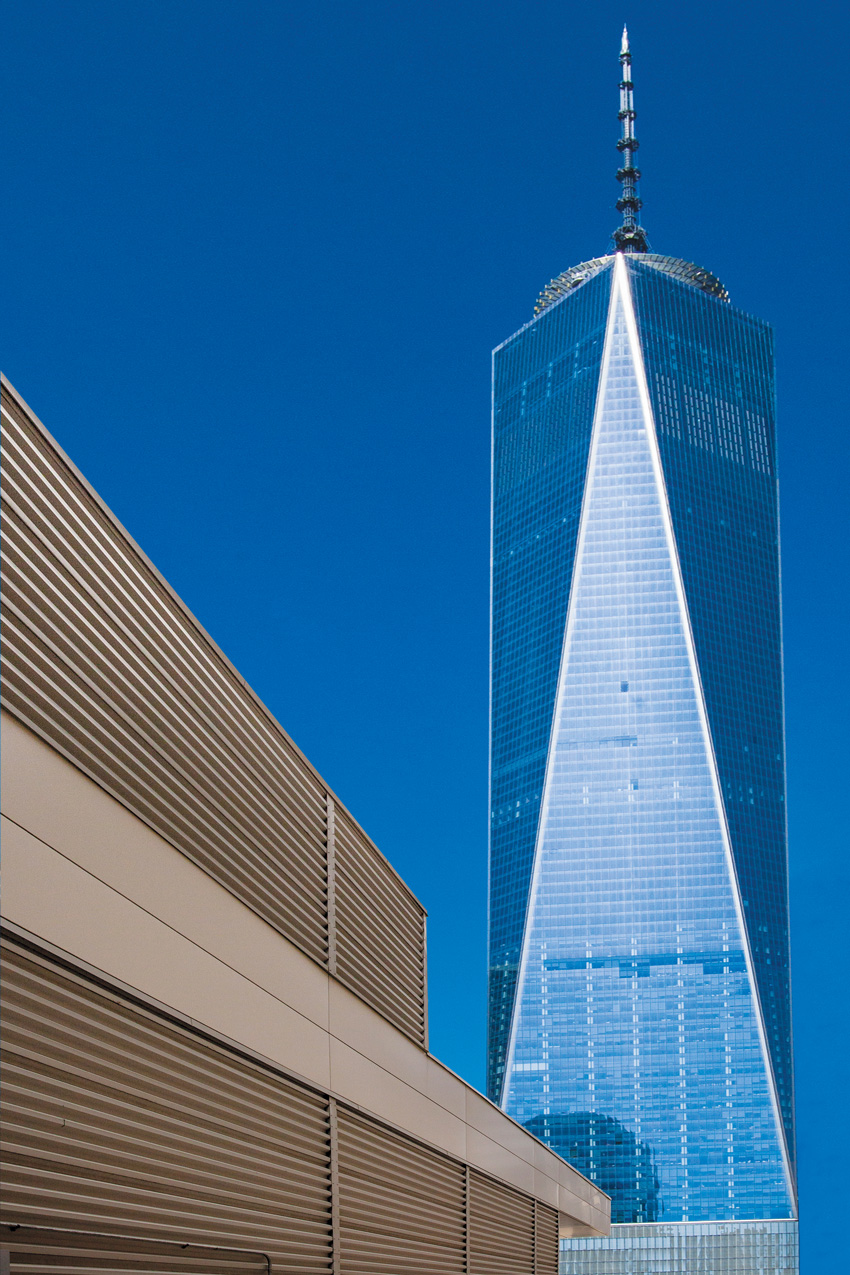
All images courtesy of Allied Metal Group
Freedom Tower in New York City was designed with exterior cladding to help create a visually stunning appearance and also meet energy efficiency goals.
The layers will vary between buildings in different climates and with different materials, but the goal is the same: to keep the inside of the building dry and at a comfortable temperature, all while addressing the building’s energy needs. While the concept of layering a building envelope sounds simple at first, the main challenge arises when it comes to attaching the outer layers to the building structure. Every single attachment point that punctures the insulation is a thermal bridge that connects the building’s interior and exterior. In cold weather, thermal bridges allow heat to escape and cold to enter the building; in summer, the opposite is true.
One way of reducing the impact of thermal bridging is to include a thermal break with a nonconductive material, such as plastic.
A plastic cap on a metal fastener or along the edge of a metal window, for example, can help break the heat transfer and improve the energy efficiency of the building.

Plastic or non-conductive polyamide can be used in cladding mount systems to break thermal bridging paths.
Another thermal break material is polyamide, which is a fiberglass compound; the material has several benefits over plastic. First, where plastic may weaken and crack under certain conditions, polyamide is very strong and can bend without cracking. Second, strips of polyamide are generally much thicker, and the thickness translates directly into improved thermal performance. When used as a thermal break for an aluminum cladding support system, polyamide breaks can drastically improve the overall thermal performance of the system.
Another way to reduce this energy loss is through continuous insulation (CI), which is becoming increasingly common and is a code requirement in states following ASHRAE 90.1-2007 and IECC 2009. Continuous insulation is basically what its name suggests: insulation that is continuous across all structural members of a building, with fasteners and service openings as the only thermal bridges. Continuous insulation often is described as rigid foam insulation or mineral wool and can be installed on the building’s interior or exterior (underneath the cladding). When used on a building’s exterior, continuous insulation can improve energy performance up to 50 percent compared to traditional interior insulation.
This approach to insulation is great for residential projects, and it’s relatively easy to implement. Commercial and multifamily residential projects that include large-panel exterior cladding systems and ventilated facades are a bit trickier because of the load requirements associated with the panels. Exterior cladding is often used as a rainscreen to protect the building’s structure and interior from wind, rain, and sun exposure, and it also can damper outside sound and provide a relatively easy way to change the look of the building.
Cladding is available in different materials, including aluminum panel, thin ceramic or cement, and even stone, but the attachment systems are generally made of metal such as aluminum and, more importantly, are attached with metal fasteners to the building structure via a specially constructed substructure. Basic requirements of the attachment system are that it can safely hold the gravity load of the panels and accommodate wind loads (and snow, depending on the climate) as well as any movement the building may experience. Each of these attachment points is a thermal bridge that can compromise the overall energy efficiency of the building.
New energy-efficient building designs are increasingly built with high-performance materials that improve not only the thermal performance but also positively impact the health and welfare of the building occupants. Exterior cladding materials often are used in this capacity while adding to the beauty and resiliency of the building. As designers shift toward creating high-performance structures that can withstand the unpredictability of changing climates and harsh environments, materials such as cladding will become increasingly important.
In addition to thermal performance, exterior cladding contributes to overall health, safety, and welfare of building occupants by protecting the building interior from moisture. The long-term impacts of damp buildings can include everything from respiratory problems caused by mold, fungus, and spore growth to the physical problems caused by rotting substrates. In other cases, moisture that gets into a building can release volatile organic compounds (VOCs), which can cause serious health problems when occupants are exposed over an extended time.
Cladding Installation
In the previous section, we noted that cladding is an important part of the building envelope. From the substrate out, envelope layers include vapor control (such as a housewrap or water-resistant barrier), thermal control (insulation), the building structural support (framing), air control (HVAC and fenestrations), and an external weather-resistive layer (cladding and siding). With the exception of the framing, the other layers are lightweight and do not contribute to structural support. In traditional cladding systems, a substructure must be built over top of the exterior substrate as a way of securing the cladding load. This means that when cladding is installed, its railing system needs to be secured through the other insulating layers and into the framing. And that railing system needs to support not only the gravitational load of the cladding panels but also any additional wind load and snow load that impact the panels. Moreover, each attachment point from the railing to the substrate is a thermal bridge that needs to be broken in order to maintain the energy performance of the building. In short, the railing systems are an incredibly important part of the cladding system.
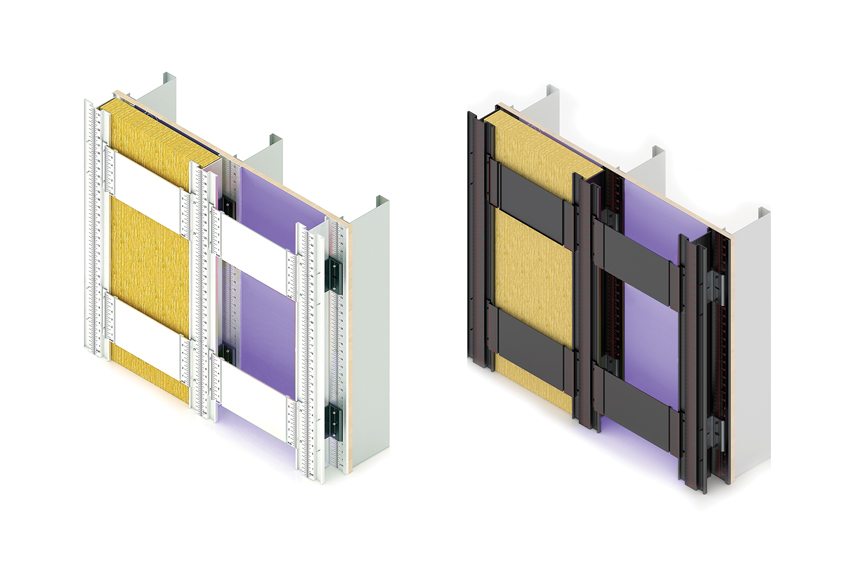
Cladding systems are installed over the substrate using a series of rails, often in a grid form, that are attached to the exterior of the building and secured to the substructure by means of some form of fastener, such as a screw.
While attachment systems vary between manufacturers, the general preparation and installation process tends to be similar. Prior to installation, there is a lengthy and complex process to prepare a substructure on the wall surface. This substructure is what the cladding will be attached to, and the support system must be customized to each project. Many different components are needed for this phase of the project, including shims, C-channels, hat channels, T-angles, metal clips, and Z-furring channels. Each item needs to be properly measured and installed correctly; this is a time-consuming and error-prone process that can add unexpected costs and delays to the project.
After the substructure is finished, the cladding support system can be attached. Systems are usually a series of rails, often in a grid form, that are attached to the exterior of the building and secured to the substructure by means of some form of fastener, such as a screw. Once the rails are installed, the cladding is usually attached to the rail segments. Some cladding designs may leave openings between panels to encourage airflow, while others may include additional elements to cover the gap between panels.
Leveling and Plumbing
Rail and cladding installation may sound relatively straightforward, but both are subject to the same basic challenges encountered when doing something as simple as hanging pictures on a wall. In theory, the task should be simple, but in practice, it takes precise measurements to ensure that the pictures are both level with and plumb to the floor. A frame that is a fraction of an inch off at one side can result in a much larger difference on the other side. While hanging pictures can be time consuming and often frustrating, that task is greatly magnified when installing a cladding attachment system on a multistory, possibly hundred-foot-wide building. The attachment rails need to be precisely attached so that they are both level and plumb; an error can offset the rest of the facade. More importantly, errors can increase costs in time and labor, as well as additional costs through the repercussions of errors. Some of these errors can impact the health, safety, and welfare of installers and building occupants. It is important to remember that proper alignment must be accomplished during installation, as leveling and plumbing are not possible after installation.
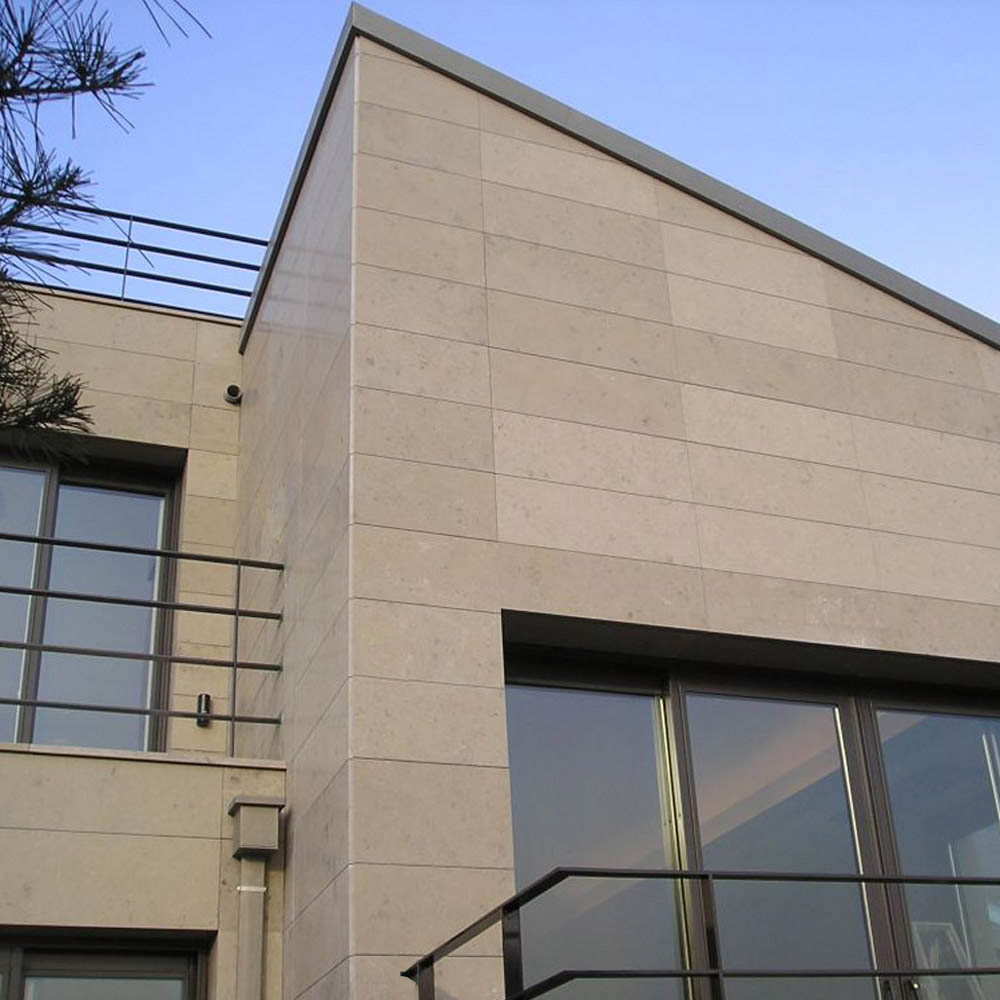
The flexible installation options of modern cladding systems allow for greater design choices for architects.
Time and Labor Costs
Traditional rail systems for cladding are time consuming to install in part because they require a complex substructure to be built prior to the installation. The complex nature of the substructure adds both time and labor costs; as noted above, precision is key to ensuring that the rails—and thus the cladding—will be level and plumb. In the case of multifamily residential properties and commercial buildings, the cladding likely will be attached to the supporting steel structure, which will require time and labor in addition to affixing the rails.
Workmanship Errors
Rail installation needs to be precise, and a large barrier to this is workmanship errors. Sometimes an error is as simple as a screw or other fixture attaching the rail not properly anchored to the building frame. On a residential home, for example, a screw may be mounted through the insulation and catch the edge of a stud rather than being well supported in the middle. Once the rail and panels are installed, that leaves the fixture vulnerable to failure. On larger projects, a railing system might be installed in a manner that is slightly off kilter, and that mistake won’t be evident until the cladding is being installed; it will take time, labor, and additional costs to fix the error.
Workmanship errors typically occur when installers deviate from the manufacturer’s installation instructions. However, sometimes the errors stem from situations when the field conditions are different from the product’s or building’s intended design. In either case, such errors can result in tolerance issues as well as improper anchoring. Errors can also prompt water intrusion as well as lower thermal performance.
Load Transfer and Cladding
Load transfer is a critical aspect of cladding installation. The three key loads that need to be considered are dead loads (gravity/the weight of the cladding system), wind loads (changes in air pressure), and movement loads (including earthquakes). Given these loads, the attachment system needs to be secured in a manner that can handle the various load transfers. That is, the system itself needs to be secured to the substructure, and the cladding panels need to be secured to the rails. Every piece of the system should be proven to be as strong and as safe as possible, and also capable of transferring the load from the cladding into the substrate.
To go back to thermal bridging, the load transfer issue is one place where things can get tricky when installing a support system for cladding. In order to properly transfer the various loads, the attachment system needs to be firmly secured through the building envelope and into the substructure with fasteners that are usually metal and thermally conductive.
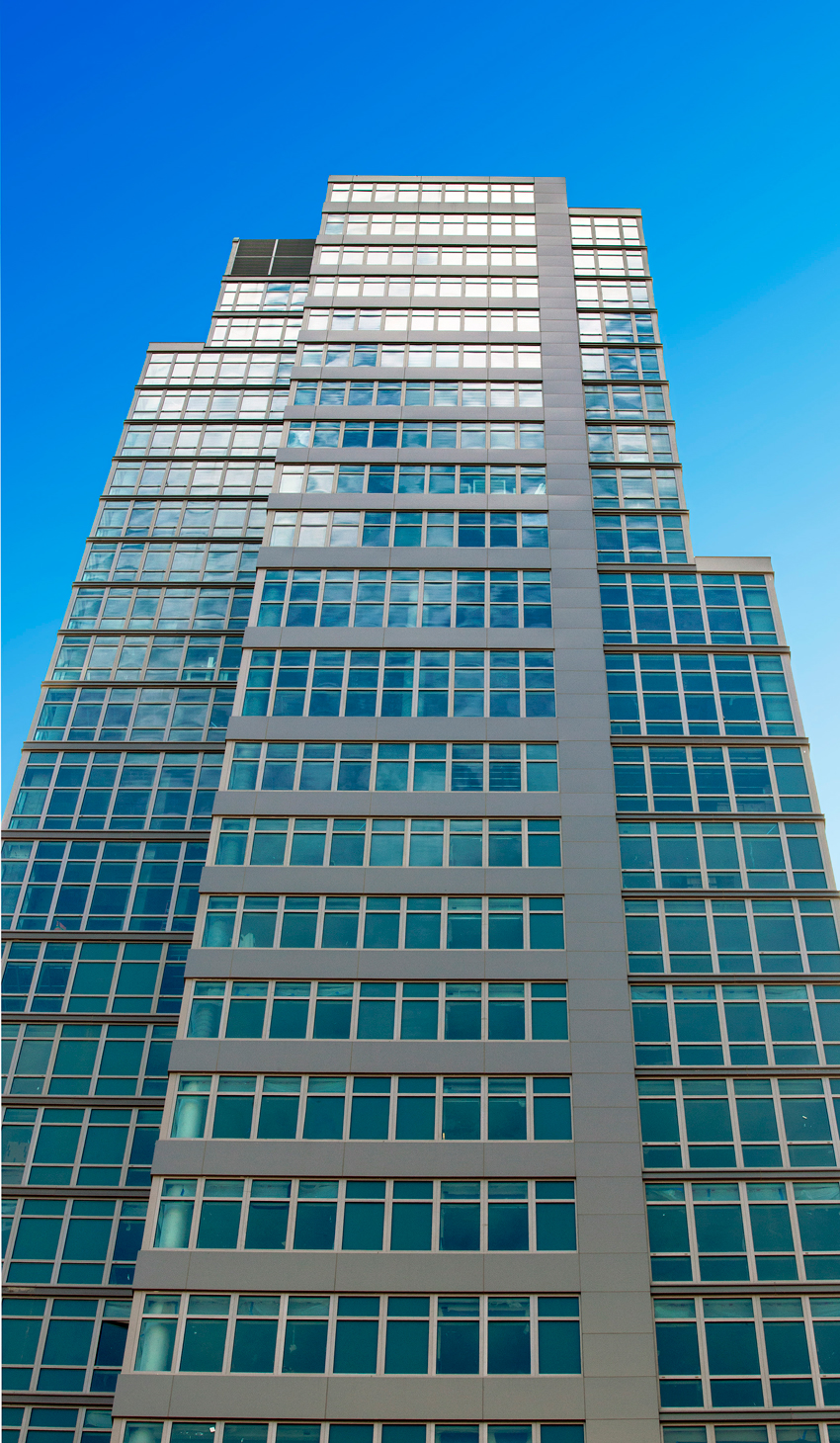
Large-scale projects can incorporate continuous insulation and also minimize thermal bridging when specifying modern cladding systems.
Mitigating Thermal Bridging With Cladding Systems
So far, we’ve been talking about thermal bridging and the thermal performance problems associated with it in terms of cladding installation. As we’ve seen, depending on the type of cladding material and design, cladding support systems can require thousands of attachment points, whether on individual panels or in the rails. Each point represents a thermal bridge that needs to be broken.
For example, double-skin facades require that as part of the external envelope, the cladding attachment rails must be attached to the internal substrate envelope. The brackets, which are usually steel or aluminum, puncture the insulation layer and greatly increase the thermal bridging. Depending on the building design, compared to the insulation layer, the thermal transmissivity of brackets can be more than 2,000 times higher than the insulation.1 This means that in winter, the warm interior is compromised by heat escaping to the cold exterior, and in summer, the heat will find its way in. Such breaches can mean that estimates of heat flow in and out of the building are incorrect—often by as much as 20 percent lower.
In order to break thermal bridges, rail bracket fasteners need to be capped, such as with plastic anchors. For large-scale projects, thousands of screws may need to be used with protective anchors—and each one of these pieces presents a potential failure point. In essence, this is one of the key challenges of current cladding attachment systems, and it has been the standard way to incorporate thermal breaks.
All manufacturers are aware of these challenges, and they all have different ways to solve the problem. The design solutions to limiting heat loss are about as varied as the different cladding systems themselves. For example, some manufacturers of metal cladding panels have opted to insulate the panels themselves. Other manufacturers have focused on ensuring that the joints or other components incorporate a thermal break, and yet others have worked to include thermal breaks in the fasteners. By and large, most of the design solutions have focused primarily on the panels or the fasteners.
The cladding attachment system as a whole, on the other hand, has until recently been an overlooked design solution to the thermal performance problems with exterior cladding. Rather than focus on separate components or the insulation layer, an innovative approach is to focus on the entire attachment system—and its installation—as a means of improving thermal performance.
The general idea with this new design is that a cladding support system can both be designed to incorporate thermal breaks and allow for continuous insulation, all while addressing some of the known installation problems. For example, the system can make securing the system to the wall an easy task, and that in turn solves the issues that arise from poor workmanship and inconsistent leveling and plumbing of attachment system rails. This whole system design approach can drastically reduce the overall heat loss that is common with most other support systems.
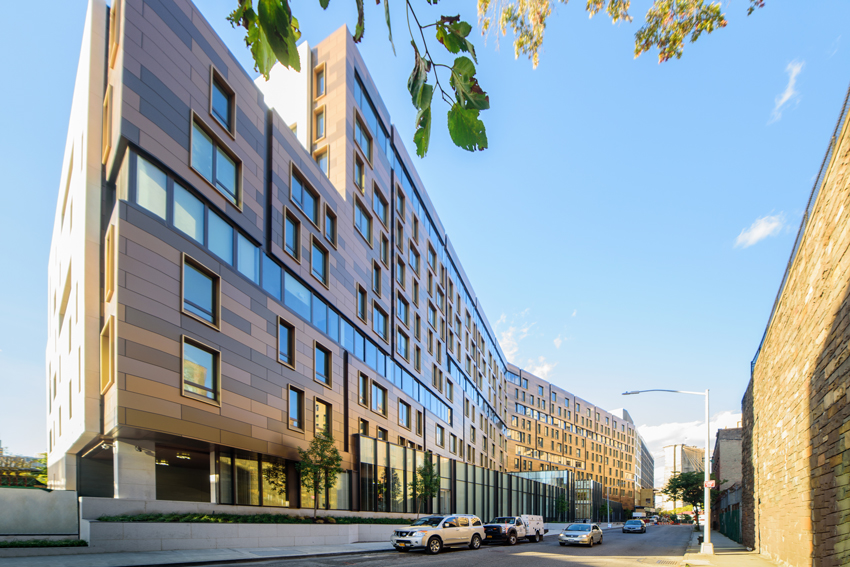
Integrated measurements and leveling systems can enable faster and more fool-proof installation of cladding, shortening construction schedules and reducing jobsite errors.
One benefit of this system is that it is able to support the cladding and exterior insulation on many different substrates. The system works by having a lightweight aluminum base track fastened to the substrate and an intermittent nonconductive polyamide thermal clips fastened to the base track; this supports the aluminum wall-mount track, and that track supports the cladding. Both base and wall mount tracks have dimension marks on them. In addition, the system includes aluminum horizontal wall mounts, which are attached to the outboard of the aluminum track—this provides additional support to the cladding. Vertical track and horizontal wall mounts provide zero sightline and receivable channels for the cladding products and also provides an opportunity to reduce the overall thickness and save space. Vertical and horizontal connections add to the building’s structural performance.
An important feature is that exterior insulation fits in between the clips and aluminum tracks. Depending on the system design, different thicknesses of insulation can be attached simply by adjusting the positions of the track and the clip. This style of system provides an air gap between the support layers and drastically reduces thermal bridging. In short, the system as a whole works as a thermal break.
The overall benefits of an attachment system that addresses the time and cost issues associated with creating a preinstallation substructure for the support system, as well as the potential errors associated with having thousands of thermal bridges to isolate with every fastener, can be significant. Moreover, simple changes, such as including an integrated leveling device and measurement lines on the attachment structure rails, mean that installation shifts from being a tricky, error-prone task to a relatively easy, straightforward installation process. Senior Glazing Systems Engineer Stewart Jeske, MS, P.E., of JEI Structural Engineering, notes that he is impressed, and he thinks that this product “will soon become the standard in the industry.” Small shifts in design can save considerable time and money during a project.
Systems That Accomodate Different Cladding Materials
Recent advances in cladding support systems address some of the challenges we discussed earlier, such as installations that are not plumb or level or subject to improper installation (and thus decreased performance). One innovative design includes systems that reduce the number of components necessary to attach the cladding to the substructure, reducing installation time and potential errors. These support designs also can accommodate different cladding materials not tied to one manufacturer, making them universal systems. Universal systems can be modular to accommodate different panel sizes and configurations and improve the ease of installation with increased adjustability. These are designed to address thermal bridging issues. Integrated design features improve load-carrying capacity of cladding support systems and enhance a building’s resiliency in the face of extreme weather conditions. Together, the combined features have the potential not only to improve the health, safety, and welfare of installers and building occupants but also to improve the quality and performance of the building.
Aligning measurements integrated into system elements can reduce installation times and errors and in turn lower the cost of installation. Integrated measurements improve installation accuracy and quality, which can raise the structural performance of cladding application significantly.
Thermal break clips minimize thermal bridging and allow continuous insulation to perform at its best. Where traditional cladding mounts create thermal bridges, specially designed clips do not. This system means that continuous insulation can meet energy code requirements for U-values on opaque wall assemblies.
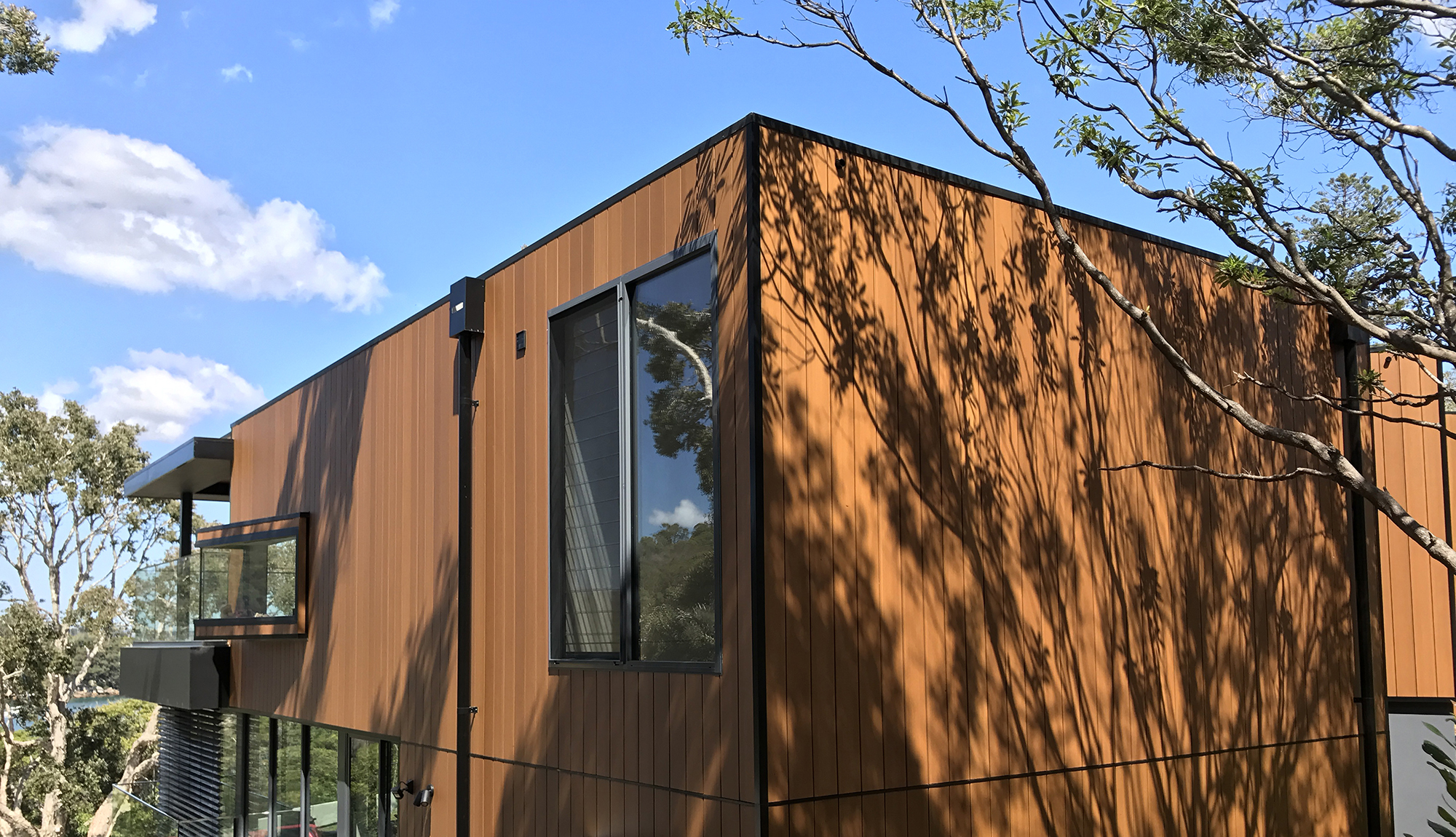
Universal systems can be modular to accommodate different panel sizes and configurations and improve the ease of installation with increased adjustability.
The challenge faced by most cladding manufacturers is how to keep a continuous insulation system genuinely continuous and avoid any thermal bridging. As discussed earlier, any fastener that punctures the insulation is a potential thermal bridge. One way around this is to use an attachment system that includes very strong clips that create the space needed for continuous insulation. This can be done by creating air space between the exterior wall and cladding, which can drastically increase the thermal performance of the system.
With design flexibility and the ability to accommodate different types of claddings, these adjustable systems are excellent for higher-end, larger projects, although single-level residential projects also can benefit. Energy performance can be increased up to 91 percent for the empty steel stud cavity walls having no insulation. These cladding systems are designed to help create healthy buildings.
Benefits of Modularized, Thermally Isolating Support Systems
The benefits of cladding support systems that both include thermal breaks in the design and accept a range of cladding materials are vast, from environmental impacts and installation to durability and performance. Environmental impacts, for example, stem from using aluminum rails. As a high-quality, recycled (and infinitely recyclable) material, aluminum is one of the most environmentally friendly materials available for certain designs. It is strong and durable but also lightweight. When compared with steel and other metals, aluminum carries lower shipping costs. Modular rail designs benefit the building and installation—and they can also be packaged efficiently, reducing waste material.
As we mentioned earlier, errors with support system installation can be time consuming and costly. A key benefit of a modular system that comes with its own leveling device is installation that’s quick and nearly foolproof. A universal system, for example, means that there are no customized parts, and that alone can help reduce installation time and, more importantly, installation errors. If something needs adjustment, a modular system specifically designed for easy adjustments makes the task quick and simple. Finally, a universal system creates less waste than other systems that have redundant rail segments, clips, and fasteners. All in all, these new systems can make the support system installation phase of cladding easy to do.
A final benefit of a universal, modular system is that it can offer reliable, safe, long-term performance that exceeds that of more traditional systems. By maintaining continuous insulation around the building envelope, these systems can improve energy efficiency significantly. This in turn can reduce the overall energy load for heating and cooling the building, all while providing occupants a more comfortable interior environment.
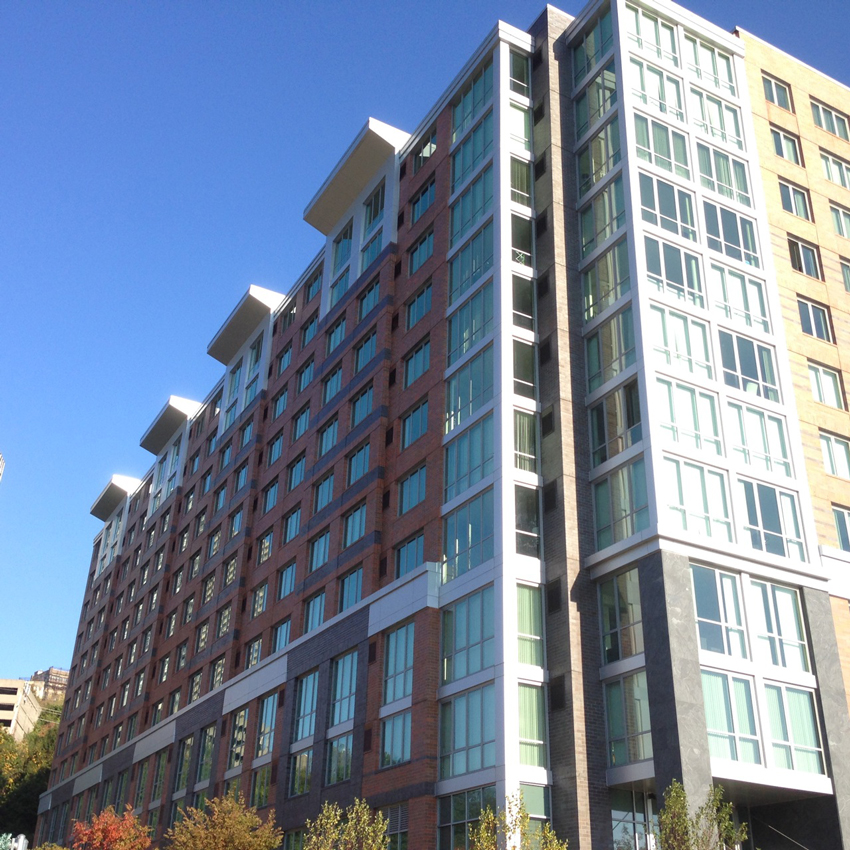
A universal system can produce less waste during construction compared to traditional systems that have redundant rail segments, clips, and fasteners.
Benefits for Architects, Owners, Occupants, and General Contractors and Installers
The installation, physical, and environmental benefits of universal, modular cladding support systems ultimately impact the people involved with a project. Everyone from architects, owners, and occupants to general contractors and installers can benefit from a cladding system that is strong, safe, and easily installed and modified—and that carries a clear environmental benefit.
Architects benefit from using a universal, modular cladding support system in several ways. Aside from the environmental benefits noted above, all of which can help with LEED v4 credits, the versatility of the support system design allows for different cladding applications. Depending on the project, this may mean that the initial exterior cladding design can be replaced in several years with something different should the designer or owner wish to do so. Moreover, the modular nature can accommodate standard construction dimensions, and so changing the exterior facade of a building can be a relatively straightforward task.
While aesthetics are clearly important for the designer, a system’s performance is a top priority. In the case of cladding support systems, performance must be tested and documented, and also meet or exceed certain standards. Standards such as ASTM E 330, which tests the effects of wind load on a building’s exterior surface elements (e.g., windows, doors, skylights, and curtain walls), is critical. Exterior cladding must be safely secured, and it must be able to withstand the wind load of the geographic location of the structure.
Exterior cladding must be tested for fire resistance. In the case of NFPA 285, an exterior non-load-bearing wall assembly (i.e., cladding) must pass key fire-safety test requirements that include maximum flame height and lateral distance, as well as maximum temperature points.
Finally, a support system needs to be able to handle the gravity load of the cladding that it supported. A universal system must be able to accommodate the gravity load of any possible cladding and do so in a manner the architect can trust. In this sense, some systems are specifically designed to handle a load far greater than needed.
Owners also benefit considerably from knowing that their building is structurally secure and the facade is stable. Safety issues aside, a cladding support system that ensures consistent and evenly installed cladding means that the building will have clean lines and a properly finished look. A final benefit for owners is that a high-performance cladding support system has the potential to greatly improve the building’s energy efficiency. In the case of commercial buildings, improved energy efficiency can reduce lifetime operational costs and also reduce the building’s energy footprint.
As with owners, occupants benefit from reduced energy costs. With heating and cooling more closely controlled, costs can be kept low while making sure that the interior temperatures remain comfortable for the occupants. In addition, a good cladding system can reduce exterior noise and help keep the occupant experience healthy and productive.
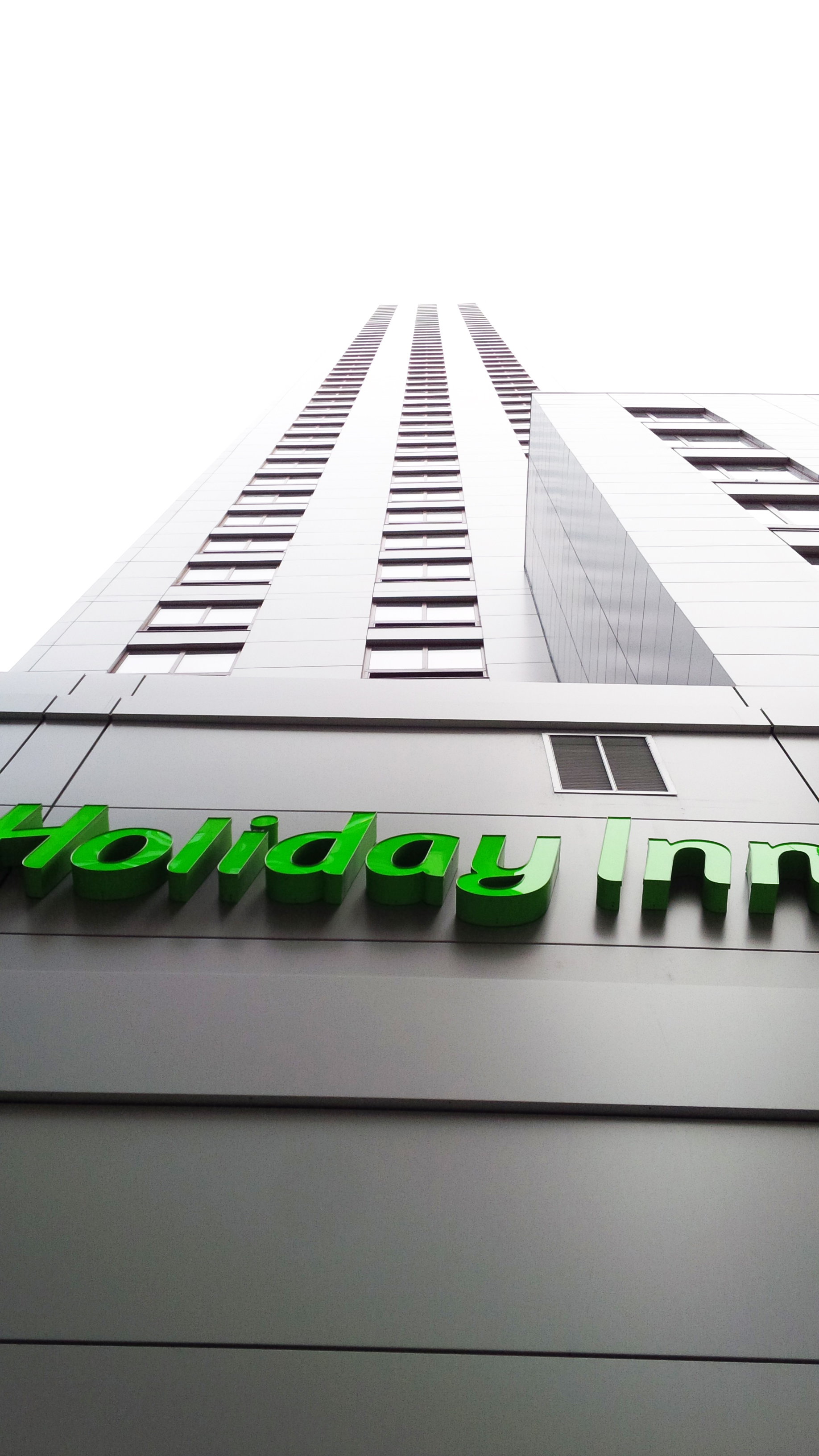
The modern style, clean finish, and lightweight construction make the installation safer.
General contractors and installers benefit from using a universal support system for cladding. For example, it helps contractors to know they are using a high-quality substructure that works with any cladding system, and that in turn, they will have shorter installation times with less jobsite waste. Moreover, any adjustments that need to be made can be done so easily. Finally, the structural integrity of the entire construction facade is enhanced. Likewise, installers benefit from a simple system that is fast and easy to install. The modern style, clean finish, and lightweight construction make the installation safer as well.
Conclusion
In summary, thermal bridging issues with exterior cladding attachments are one of the key challenges in maintaining continuous insulation on a building envelope. Traditional attachment systems that rely on attaching to a complex substructure can lead to increases in workmanship error that may be time consuming and costly. Recent advances in attachment system design can overcome these barriers with an integrated, modular system that reduces installation times and potential errors while helping ensure the performance of the building’s continuous insulation.
References
1Theodosioua, T.; Tsikaloudakia, K.; and Bikasa, D. “Analysis of the Thermal Bridging Effect on Ventilated Facades.” Procedia Environmental Sciences. Volume 38. 2017. Web. 16 May 2018.

|
CL-Talon is a new support system for cladding designed to construct more sustainable buildings. It improves the building’s thermal performance while reducing installation time and cost. Its benefits include reducing environmental impacts, ease of installation, durability, and performance. CL-Talon allows vertical and horizontal installation with zero sightline. cl-talon.com |

